If marketing fascinates you.
And you read too much about it as I do.
You’ve probably come across the below lines more than once:
“Steve Jobs was a college dropout.”
“He, Steve Wozniak, and Ronald Wayne started Apple in his parents’ garage.”
“Steve Jobs was fired from Apple in 1985.”
“Steve Jobs returned to Apple in 1997.”
“Apple released the iPhone in 2007.”
The stories behind the Apple brand alone make you desire their products.
The number one reason Apple has been so successful can be traced to Steve Jobs.
Jobs was a master storyteller.
He talked about everything he’s done, his life and mindset.
Jobs discussed taking calligraphy classes.
“I learned about serif and sans serif typefaces, about varying the amount of space between different letter combinations, about what makes great typography great.
It was beautiful, historical, artistically subtle in a way that science can’t capture, and I found it fascinating.” – Steve Jobs
Steve Jobs was the first to give us a real choice in fonts, even though he didn’t invent typefaces.
Storytelling is a powerful key to building a memorable brand.
Neil Patel is one of the most respected digital marketers and has a popular personal brand.
In one of his blog posts, he shared a story about how he got started in digital marketing:
“The first website I ever started was a job board called Advice Monkey. I was trying to get the website ranked for terms like ‘job search’ and ‘tech jobs.’
I hired a few SEO agencies to help me out, but none provided any results. After tens of thousands of dollars down the drain, I had no more money and no choice but to learn how to optimize Advice Monkey for search engines… all on my own.” – Neil Patel
Alex Turnbull, the CEO, and founder of Groove wrote about how he built a company that generates $5 million annually within three years of doing content marketing.
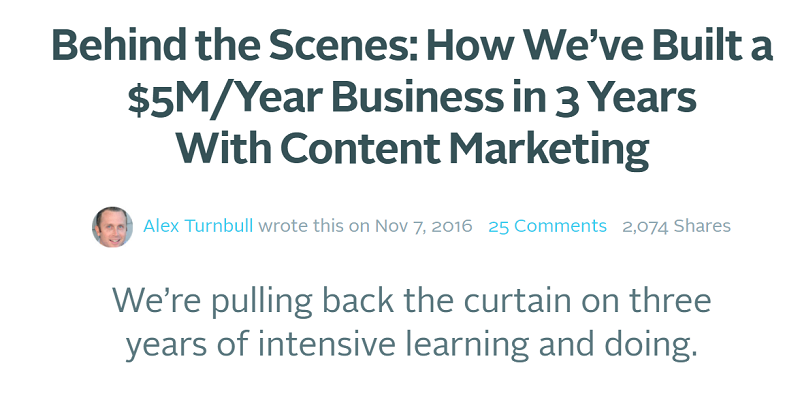
When you tell exciting stories, it makes your company worth remembering for prospects and customers.
Share your personal opinions
Some years ago, Mark Schaefer published an article titled “Content Shock: Why content marketing is not a sustainable strategy.”
Schaefer elaborated on what he calls “Content Shock” using personal opinions.
“If I was ‘paying’ my readers $500 a week in 2009, I am probably paying them $1,500 per week now because of the pressure to create more and better content that will keep their attention.
Next year, it might be $3,000 per week — just to MAINTAIN my readership in the face of the Content Shock.
At some point, the amount I am ‘paying out’ will exceed the amount I am bringing in and at that point, creating content will not be a smart business decision for me and many other businesses.” – Mark Schaefer
The article sparked a discussion in the digital marketing niche.
It is now one of the most popular pages on Schaefer’s blog, according to Open Site Explorer.
Mentioning a bunch of facts and statistics won’t make someone follow your brand and buy your product.
People want to know where you and your company stand on issues.
They want to know your opinions.
Saying what others have said isn’t going to separate you from the competition.
When Matt Cutts, the former head of the webspam team at Google, wrote a blog post on why you shouldn’t use guest blogging to build links, Neil Patel came out with his own opinion on the subject.
Here’s a snippet from the blog post published by Matt Cutt:
“Okay, I’m calling it: if you’re using guest blogging as a way to gain links in 2014, you should probably stop.
Why?
Because over time it’s become a more and more spammy practice, and if you’re doing a lot of guest blogging then you’re hanging out with really bad company.
Back in the day, guest blogging used to be a respectable thing, much like getting a coveted, respected author to write the introduction of your book. It’s not that way any more.”
And below is a snippet from Neil Patel’s post. Pay attention to how he wrote his thoughts on the topic.
“The reason guest posting won’t work the same way it used to is because companies are trying to guest post on irrelevant blogs.
The content they are publishing isn’t high in quality either. In other words, they are trying to do the bare minimum to get a link.
So, what I think Google will end up doing is this:
- Discount guest-post links from irrelevant blogs.
- Discount rich anchor text links from guest posts.
- Start looking more at author rank to figure out if you are writing high or low-quality content.
- Place more emphasis on social signals as the more social votes a post has, the higher its quality usually is.
In the end, if you are using guest posting to rank for specific head terms, I don’t think it will be a good long-term strategy. But if you use it to help build up your brand, referral traffic, and overall sales, it will continue to be a great strategy.” – Neil Patel
Think of the people you like. They share their opinions with you, and you agreed with them.
Think of the people you don’t like. They probably shared their opinions with you, and you disagreed with them.
Andrew Chen is one of the most respected people in the startup community.
Why?
He shares his personal opinions about various startup topics on his blog.
Recently, he published a blog post, talking about why marketplaces are underestimated.
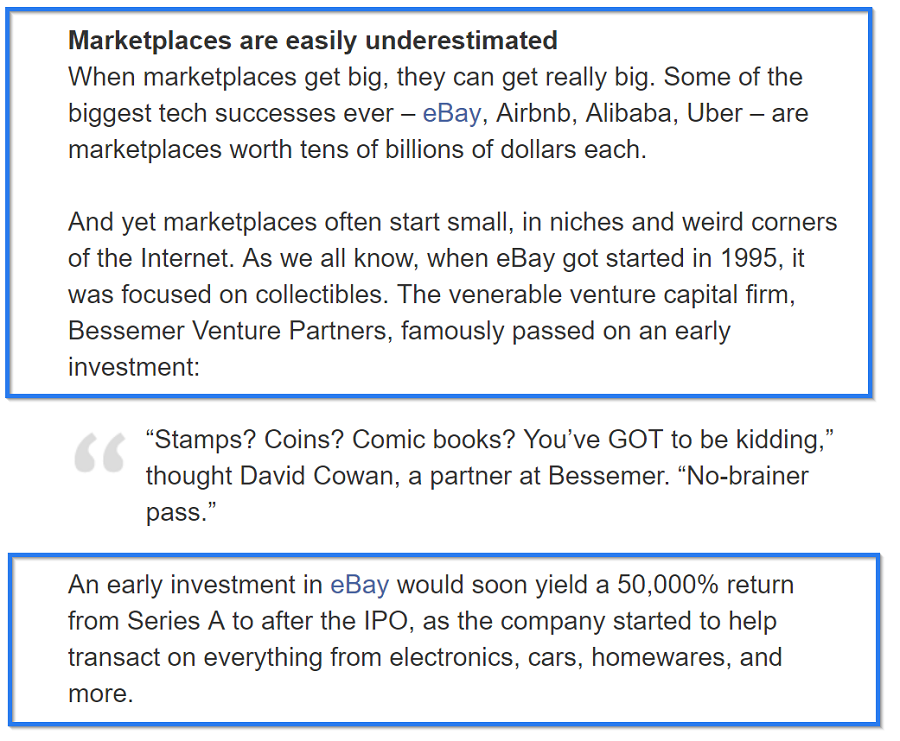
With so much new content getting published every day on the web, you need to stand out.
The best way to do that is to share your personal opinions.
Do your research on a topic before writing about it.
Focus on delivering an extraordinary value
“The more value you create, the more valuable you become.”
An extraordinary value delights customers because it blows everything out of the water.
Asim Qureshi is providing so many values on Quora.
I see his answers almost every time I visit Quora.
According to him, his two startups have traffic from Quora as their main marketing channel, and the conversion rates are high.
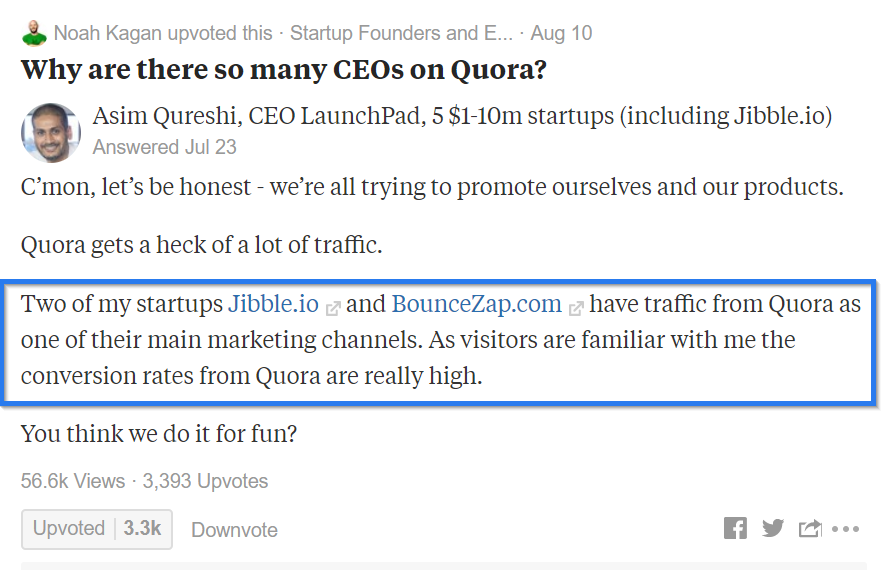
Quorans are familiar with Asim because he’s providing a lot of good answers on the platform.
Lead, teach, inspire, and listen to your customers in ways that make them like and recognize you.
Go the extra mile for them. Never settle for less.
Create something better than the competition. Continue to do this for a long time.
Never settle for the average or normal.
By creating amazing content on a regular basis, people will start to notice and remember your brand.
Engage with people
Here are the things you must do to make people develop a sense of connection with your brand:
- Make them feel heard
- Answer their questions
- Help them fix their problems
One of the best places to achieve all these is on social media.
For example, Nike makes its customers feel heard on Twitter, even if it means replying with a GIF.
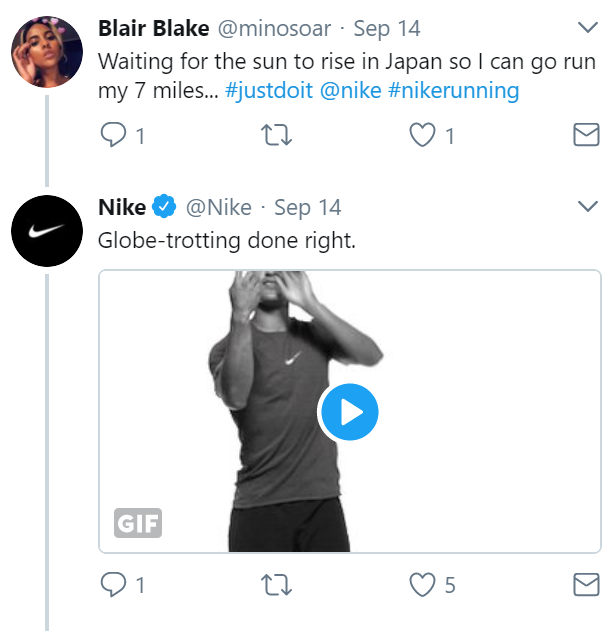
Social media lets you engage with people who are interested in your business.
When you engage with people on social media, they interact and share their experiences with you.
People want great content. They want an interactive, real-time conversation with you.
Don’t ask how you can sell to them. Ask how you can help them.
When you do this, people have so much love for you.
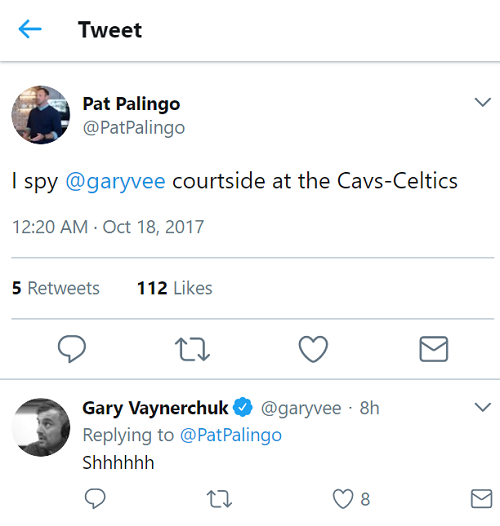
If you only tell people about what you sell, they have the option of disliking and forgetting your brand.
But when you talk to people about their needs, interests, and problems, it makes them like you.
Deal with negative criticism and focus on the positive
Everyone isn’t going to love what you’re doing, and that is fine.
Some people will criticize you and your brand.
How you deal with criticism is what’s important.
If you handle a negative review of your brand well, it’ll help you win those angry customers. Loyal customers will be proud of you more for that.
But when you mishandle a criticism, angry customers may dislike your brand more, and even some loyal customers may not be happy about that.
So, how do you deal with negative reviews when they appear?
First, you should respond to negative reviews.
For example, if someone complains they don’t like the service you’re providing.
Explain why your service is great, and what you’re going to do to fix it.
If they are wrong, you should appreciate the feedback and promise to improve the experience for the next time.
Explain to them why you think you have decent service, product, or offering right now.
Some people will still disagree. You just can’t please everyone.
The important point here is to respond to these people in a friendly and positive way.
Don’t tell a customer that they are wrong and don’t know what they are saying.
Responding negatively or rudely could upset your happy customers and fans.
Your response should be positive.
Secondly, you should use negative feedback to improve your business.
Even if you’re not receiving negative reviews, you should strive to make your business better.
The more you try to please unhappy customers, the less negative reviews you get.
If many people can rate you 4.5 or 4.7 out of 5 stars, it means you’ve built a brand worth remembering.
Newtons respond positively to a request to bring back a discontinued product.

A response like this win hearts.
The brand could’ve said that they will never bring back the discontinued product, hurting the customer in the process.
They promised to pass the comment to their team. Comments like this make an unhappy customer feel heard.
When you ignore a negative comment, it could turn into a social media wildfire.
So, respond to all negative comments and focus on being positive when you do.
Become a media company
Brands use the media to reach and communicate with prospects.
The media has been evolving a lot over the last ten years. A lot of businesses have not been evolving with constantly changing media.
Today, every brand can become a media company to succeed and stay ahead of the competition.
We are now living in a world where you don’t have to invest in the printing press, or satellite, or a sales team to distribute your story.
Everybody can use the internet to distribute their stories via amazing tools like YouTube, Medium, Twitter, Facebook, Instagram, etc.
You don’t need the help of a newspaper, blog, or influencer to reach prospects.
All you need to do is become a media company first.
Even though your company sells products and services, you also have to create interesting and entertaining content people want to read online.
The faster you realize that you need to become a media company, the more you’ll succeed in a few years from now.
For example, HubSpot was a media company before it began to develop and sell software for marketers.
HubSpot has too much content that its website now receives over 4.5 million unique visitors each month.
Smart Insights is a marketing consulting firm. They publish a lot of content on their blog, which receives over 1 million monthly visits, according to SimilarWeb.
It’s not surprising that Smart Insights has been able to attract renowned brands like 3M, Canon, HSBC, and HP as clients.
Even a California insurance agency like Nielsen Professional Insurance Services, Inc. is putting content there on the web.
There’s no way you’ll create so much valuable content and prospects won’t continue to remember you.
Despite the intense competition online, medical startups like MedCognition should focus on being a media company.
Don’t abuse marketing tactics
Web users receive lots of spammy emails from digital marketers.
I’ve subscribed to a few email newsletters, only to realize that I’ve been bombarded with tons of emails some hours later.
Digital marketers are good at taking a marketing strategy that is working and abusing it until it no longer works.
Above, I talked about companies like HubSpot and Smart Insights publishing lots of blog posts every day.
Some digital marketers will create lots of auto-generated content and publish hundreds of blog posts per day. These are fake blog posts.
Because answering questions on Quora works, some marketers will answer a question with one sentence.
They’ll try to answer a lot of questions as possible with one sentence.
Some might even copy and paste other people’s answers and claim the credit for them.
Don’t!
Instead, deliver great value each time with your ads, emails, blog posts, Quora answers, Facebook, LinkedIn, and Twitter updates.
Build a community around your brand
In their first three years in business, social media management tool, HootSuite grew from zero to 3 million users.
They achieved this feat without spending a dime on ads, marketing, and PR.
Their secret?
Community building.
By the end of 2012, they had hosted over 100 Hootups, as they call it.
Here’s the video they made celebrating 100 Hootups, in 10 languages, 46 cities, and 13 countries.
When you build a community around your brand, customers become advocates of your products and services.
For example, Apple has built a community around their products.
You don’t need to see Apple’s ads before you buy their products.
Just meet two Apple fans and watch how enthusiastic they are about the brand.
Immediately, you’ll start to develop a love for it. You’ll want to buy it so you can become part of the Apple community.
Check out this article to further help you build your brand online.
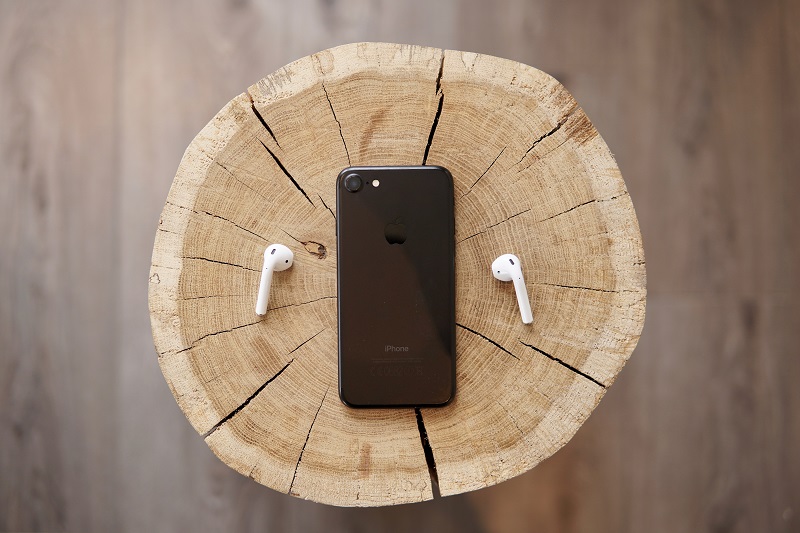
You can start a Facebook group or page for your business and publish updates that get people to talk about your brand. It doesn’t matter if you’re a business. A dentist and orthodontist in Phoenix can build a community on Facebook.
Advocates will talk about your business in bars, meetings, and recommend it to their friends.
Building a community around your brand takes time.
It means showing up every day and delivering exciting content people want to share with their network.
It also means creating a remarkable product or delivering a service the competition can’t beat.
